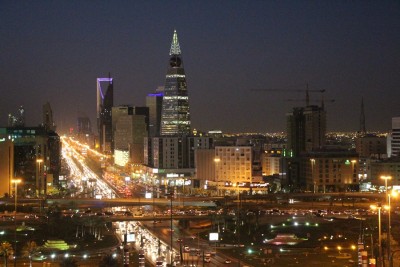During the past few weeks, we have heard in statements from Saudi officials that Saudi Arabia’s non-oil exports are increasing. In 2013 alone, the value of Saudi oil exports increased by 6.7%, while non-oil exports increased by 2.4%. From 2003 to 2012, total non-oil exports increased from SAR 350 billion to 1.4 trillion.
The increase in total exports is positive sign for any economy. During the period of 2006 – 2013, non-oil exports increased by 127%, while oil exports increased by about 67%. Some argue that non-oil export figures are a good indicator of how diversified the economy has become and how the economy has reduced its dependence on oil exports for growth.
 But a close analysis of the data reveals a very different picture. A majority of these so-called non-oil exports are in fact derived from hydrocarbon production. According to the latest comprehensive and accurate data (which dates back to 2012), the Kingdom’s total exports amounted to 1.4 trillion Saudi riyals, and oil exports accounted for 87% of the total exports, leaving just 13% (SAR 189 billion) of all exports as considered to be non-oil. However in reality, 65% of that 13% are from chemical and plastics exports, which are hydrocarbon products. This realistic portrayal of the figures reveals that in fact 95% of Saudi Arabia’s total exports are related to hydrocarbons!
But a close analysis of the data reveals a very different picture. A majority of these so-called non-oil exports are in fact derived from hydrocarbon production. According to the latest comprehensive and accurate data (which dates back to 2012), the Kingdom’s total exports amounted to 1.4 trillion Saudi riyals, and oil exports accounted for 87% of the total exports, leaving just 13% (SAR 189 billion) of all exports as considered to be non-oil. However in reality, 65% of that 13% are from chemical and plastics exports, which are hydrocarbon products. This realistic portrayal of the figures reveals that in fact 95% of Saudi Arabia’s total exports are related to hydrocarbons!
Food commodities represent 12.8 percent of Saudi Arabia’s total non-oil exports, and of that 12.8 percent, milk and dairy products comprise 31%. Without direct government support for water, electricity, diesel, gas and feed required to produce these commodities, the incentive to produce in this sector would be very weak. Therefore, consideration should be given to exports of vegetables, fruits and animal products, including such as milk and dairy products, as heavily dependent on government support. The production of base metals, which reached the total value of SAR 9.2 billion in 2012, likewise benefits greatly from low gas prices and heavy subsidies from the government.
With such heavy dependence on government subsidies, one must wonder what would happen to these industries without precious assistance from the government. This begs the following question: Should the government assist any of the above-mentioned industries to survive in case the energy and other support subsidies provided by the government are eliminated? Surely, Saudi Arabia cannot achieve export-led growth without oil and gas as a dominant figure in total exports, but if domestic gas prices soar, would it be worth it to prop up these industries? The quick answer is no!
The argument here is that the government cannot continue to support industries that are only competitive because of low energy costs and foreign labor, and that create few jobs for Saudi citizens with subsidies that are threatened by soaring domestic energy consumption. During the process of economic growth, the government should take on a role as a management mentor in the areas of planning, funding and evaluation, as well as to develop effective policies for export-led growth, which has not yet been identified.
Merely stating that non-oil exports increased – with most of those non-oil exports heavily dependent on hydrocarbons – does a disservice to the future of the Saudi economy.
***
 Dr. John Sfakianakis is the Chief Investment Strategist of MASIC, the Riyadh-based investment and asset management company.
Dr. John Sfakianakis is the Chief Investment Strategist of MASIC, the Riyadh-based investment and asset management company.
Editor’s Note: This article originally appeared in Arabic on the Saudi news website Alyaum. SUSTG.org is pleased to feature this analysis and commentary by Dr. Sfakianakis as translated from his weekly columns.









